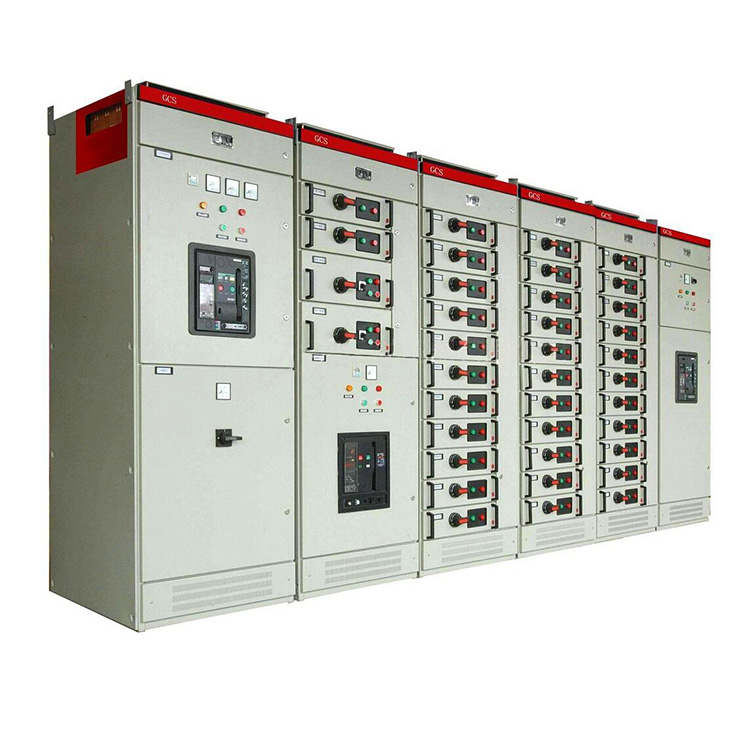Components of Electrical Switchgear
2024-06-05
Electrical switchgear refers to a collection of electrical equipment used to control, protect, and isolate electrical circuits and equipment in power distribution systems. It plays a crucial role in ensuring the safe and reliable operation of electrical networks by regulating the flow of electricity and safeguarding against faults and overloads. Here's a comprehensive overview of electrical switchgear:
Components of Electrical Switchgear:
1. Circuit Breakers:
- Automatically interrupts the flow of electricity in the event of an overload, short circuit, or fault.
- Types include air circuit breakers (ACBs), molded case circuit breakers (MCCBs), and vacuum circuit breakers (VCBs).
2. Disconnect Switches (Isolators):
- Physically isolates a circuit from the power supply for maintenance or repair purposes.
- Often used in conjunction with circuit breakers for additional safety.
3. Protective Relays:
- Monitors electrical parameters such as voltage, current, and frequency to detect abnormalities and initiate protective actions.
- Activate circuit breakers or disconnect switches in response to faults or abnormal conditions.
4. Busbars:
- Conductive bars or strips that distribute electrical power to various circuits within the switchgear assembly.
- Connects incoming and outgoing circuits, enabling the transfer of electricity between them.
5. Control Panels:
- Houses control switches, indicators, and other devices used to monitor and operate the switchgear.
- Provides a user interface for managing the electrical system.
6. Fuses:
- Offers overcurrent protection by melting and breaking the circuit when current exceeds a predetermined threshold.
- Common types include cartridge fuses and fuse links.
Types of Electrical Switchgear:
1. Low Voltage (LV) Switchgear:
- Operates at voltages below 1 kV (1000 volts) and is commonly used in residential, commercial, and industrial applications.
- Protects against overloads, short circuits, and earth faults.
2. Medium Voltage (MV) Switchgear:
- Operates at voltages between 1 kV and 33 kV and is typically found in substations and industrial facilities.
- Provides distribution and protection for medium-voltage power networks.
3. High Voltage (HV) Switchgear:
- Operates at voltages above 33 kV and is used in transmission and distribution networks.
- Ensures the safe and reliable transmission of electricity over long distances.
4. Metal-Enclosed Switchgear:
- Enclosed in metal enclosures for enhanced protection against environmental factors and electrical hazards.
- Offers modular designs for scalability and ease of installation.
5. Gas-Insulated Switchgear (GIS):
- Utilizes sulfur hexafluoride (SF6) gas as an insulating medium to minimize the size of switchgear installations.
- Suitable for high voltage applications where space is limited.
6. Air-Insulated Switchgear (AIS):
- Uses ambient air as the insulating medium and is commonly used in low and medium voltage applications.
- Offers cost-effective solutions for indoor and outdoor installations.
Functions of Electrical Switchgear:
1. Control:
- Allows manual or automatic control of electrical circuits, including switching operations, load shedding, and fault isolation.
2. Protection:
- Detects abnormal electrical conditions and interrupts the circuit to prevent damage to equipment and personnel.
- Protects against overloads, short circuits, earth faults, and other faults.
3. Isolation:
- Physically isolates electrical equipment for maintenance, repair, or testing purposes to ensure the safety of personnel working on the system.
4. Switching:
- Facilitates the switching of electrical loads between different sources or circuits to maintain continuity of supply and optimize system performance.
Applications of Electrical Switchgear:
1. Power Generation:
- Controls and protects generators, transformers, and other equipment in power plants and renewable energy facilities.
2. Transmission and Distribution:
- Manages the flow of electricity through transmission and distribution networks, including substations and switchyards.
3. Industrial Facilities:
- Provides electrical distribution and protection for manufacturing plants, refineries, mining operations, and other industrial facilities.
4. Commercial Buildings:
- Supplies electricity to commercial and institutional buildings such as offices, hospitals, schools, and shopping centers.
5. Residential Buildings:
- Distributes electricity to homes and apartment buildings, ensuring safe and reliable electrical service for occupants.
Maintenance and Safety:
1. Regular Inspections:
- Conduct routine inspections of switchgear components to identify signs of wear, damage, or deterioration.
- Check for loose connections, overheating, and abnormal sounds or odors.
2. Scheduled Maintenance:
- Follow manufacturer recommendations for periodic maintenance tasks such as cleaning, lubrication, and testing.
- Inspect and test protective relays, circuit breakers, and other critical components.
3. Safety Precautions:
- Ensure proper training and certification for personnel working with switchgear equipment.
- Follow lockout/tagout procedures when performing maintenance or repairs to prevent accidental energization.
4. Environmental Considerations:
- Dispose of old or obsolete switchgear equipment in accordance with environmental regulations and industry best practices.
- Consider the environmental impact of switchgear materials and insulation gases, such as SF6, and explore alternatives when possible.
Electrical switchgear is a fundamental component of electrical power systems, providing control, protection, and isolation for electrical circuits and equipment. Proper design, installation, operation, and maintenance of switchgear are essential to ensure the safety, reliability, and efficiency of electrical distribution networks.



